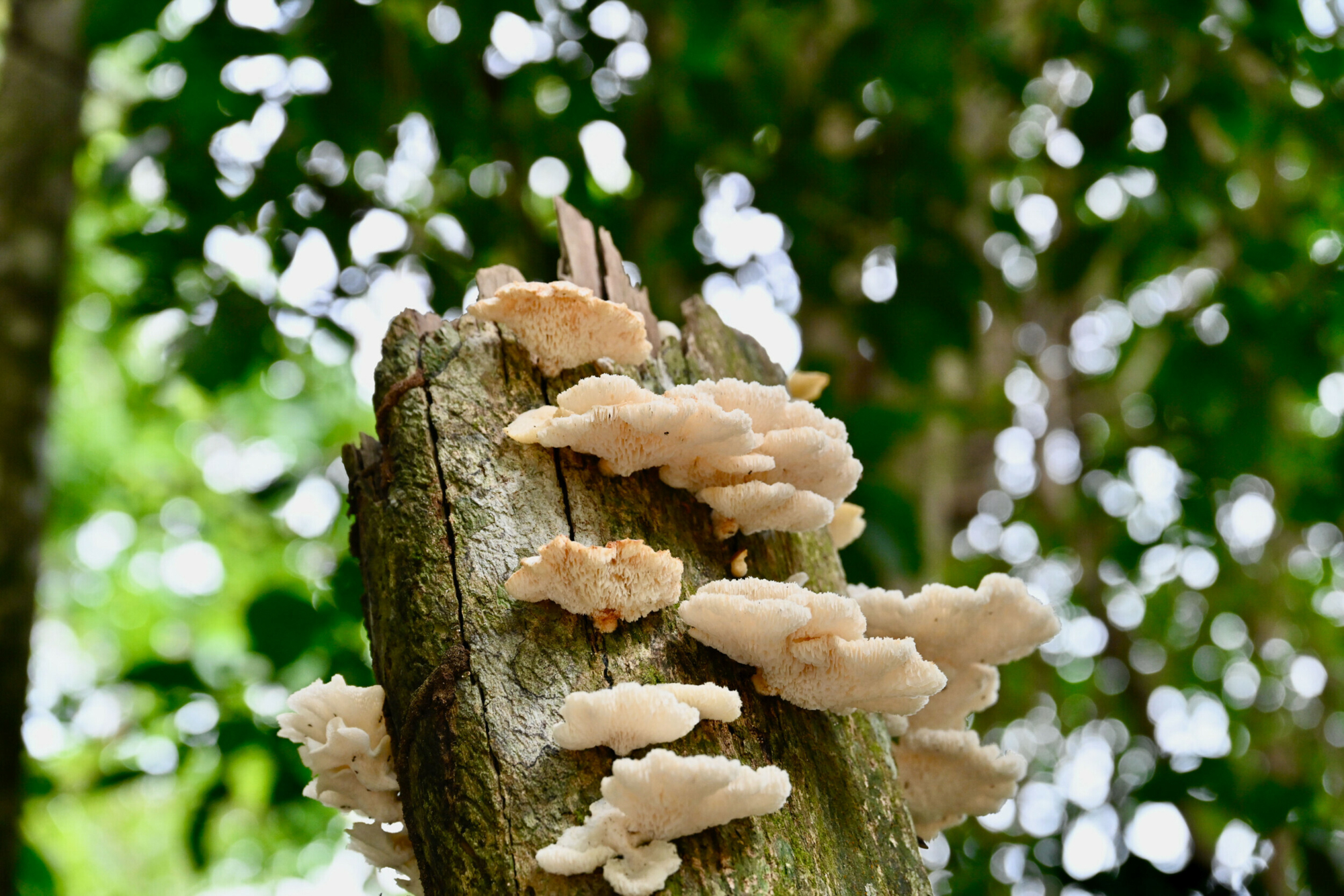Discovering the Delicate Balance of Nature in Manuel Antonio National Park

In the heart of Manuel Antonio National Park, a stunning display of nature's intricate connections unfolds on the bark of a tree. This photograph, taken with a Nikon camera and a 24.0-200.0 mm lens, captures the essence of the park's micro-ecosystems through the growth of tree fungi—a testament to the park's thriving biodiversity.
The Silent Sustenance: Tree Fungi as Forest Custodians
Subject Matter Fungi are often overlooked, yet they play a critical role in forest ecosystems. The fungi featured in this image serve as both decomposers and symbionts, breaking down organic material and facilitating nutrient exchange between trees and the soil. Their delicate, fan-like structures stand out against the tree's rugged bark, highlighting their ethereal beauty and resilience.
Manuel Antonio National Park: A Biodiversity Hotspot
Significance of the Location Manuel Antonio National Park, located at 9° 22’ 43.002” N latitude and 84° 7’ 24.04” W longitude, is a treasure trove of biodiversity in Costa Rica. It's a place where the Pacific meets the rainforest, and where countless species, some endangered, find sanctuary. The park's history is as rich as its wildlife, once serving as a refuge for pre-Columbian populations and now as a conservation area for precious ecosystems.
Capturing the Essence of Tropical Climates
Time of the Year The photo's timing, in the midst of the tropical rainy season, accentuates the lushness of the location. The moisture in the air and the soft, diffused light of the canopy create an ideal setting for fungi to thrive, and this image encapsulates that particular moment when nature's artistry is in full bloom.
The Technical Craft Behind the Shot
Camera Settings With an aperture of f/6.3 and a shutter speed of 1/125, the photographer struck a balance between depth of field and capturing the stillness of the scene. An ISO of 1800 was necessary to compensate for the low light conditions under the dense forest canopy without sacrificing the sharpness captured at a focal length of 86mm.
Lens Used The Nikon 24.0-200.0 mm lens provided the versatility needed to zoom into the fungi while maintaining a clear distinction from the bokeh background, showcasing the textures and patterns in high definition.
Best Photoshoot Practices
Lighting and Composition Natural lighting filtered through the tree canopy was harnessed to illuminate the fungi, showcasing their intricate detail without artificial interference. The composition adheres to the rule of thirds, with the fungi elegantly positioned to lead the viewer's eye through the image.
Delving Deeper
Analyzing the Image This photograph does more than just depict tree fungi; it represents the unseen yet fundamental processes that sustain forest life. It invites viewers to consider the imperceptible interactions between species that are crucial to our planet's health.
Weaving Stories Around the Fungi of Manuel Antonio
Every picture has a story, and this image is no exception. It speaks of the resilience and adaptability of life in Manuel Antonio National Park. Local legend has it that the park is a remnant of a forest that once covered vast regions of Central America, serving as a historical crossroads for wildlife and indigenous tribes.
The Art of Visual Storytelling Through the Lens
The fungi's delicate form, resembling miniature landscapes, tells a tale of survival and symbiosis. The image invites the imagination to consider the unseen world beneath our feet, one that is teeming with life and activity essential to our ecosystem's survival.
Technical Insights for the Aspiring Photographer
While the technical details of photography are complex, this image serves as an example of how adjusting camera settings to the environment can yield stunning results. It showcases how understanding the interplay of light, shadow, and texture can bring the smallest details to life.
A Personal Journey Through Costa Rica's Natural Heritage
Manuel Antonio National Park holds a special place in the hearts of travelers and photographers alike. It offers a unique perspective on the importance of conservation and the role each organism, no matter how small, plays in the larger narrative of nature.
Inspiring Conservation Through Photography
By capturing the beauty of the park's fungi, this photograph serves as a silent call to action, a reminder of the fragile interconnections that sustain our world. It's a
visual invitation to appreciate and protect the delicate balance of ecosystems that, while often overlooked, are vital to our planet's diversity.
The Final Frame: A Call to Action
As we conclude our exploration of this image, we hope to inspire not just an appreciation for the technical aspects of photography but also a deeper understanding of the ecological narratives that each photograph can tell. We invite you to take your camera, step into nature, and capture the stories that unfold in the viewfinder, contributing to the global conversation on conservation and the beauty of our natural world.
Engage with the Unseen: A Journey into Macro Photography at Manuel Antonio National Park
Personal and Emotional Reflections For those adventurous souls seeking to uncover the hidden layers of nature, Manuel Antonio offers a vast canvas. Remember to tread lightly, respecting the home of the species you capture, and take a moment to reflect on the interconnectedness of this ecosystem.
Technical Aspects and Photography To aspiring photographers: embrace patience and mindfulness. The challenge lies in waiting for the perfect light, the stillness of your subject, and respecting the tranquility of their habitat. The reward is a photograph that not only depicts beauty but also tells the story of a place and time.
Analytical and Educational Perspectives Through this image, we gain insights into the ecology of fungi and their significance in forest ecosystems. It's a lesson in the beauty of biodiversity and the subtle yet profound impact of each organism within it.
We hope that this journey through the lens has not only provided a visual feast for your eyes but has also enriched your understanding of the natural world and the art of photography. We encourage you to share your thoughts and experiences, engage in the conversation about conservation, and, above all, keep exploring the wonders that await in the great outdoors.
